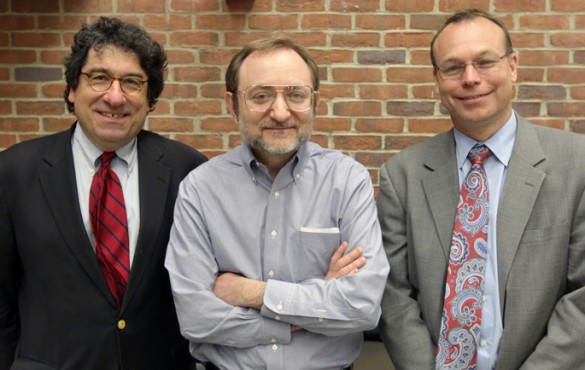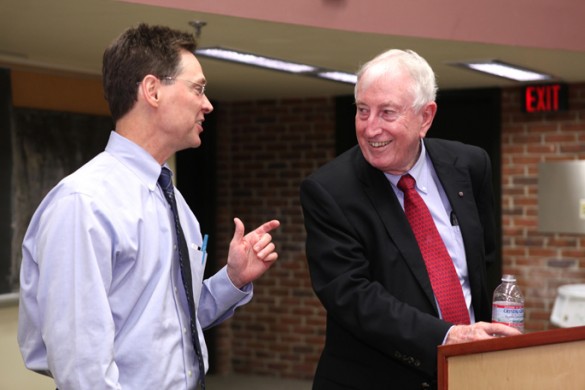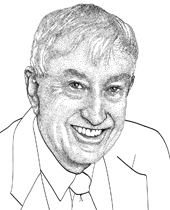
In a wide-ranging lecture that moved from plants to nematode worms to human leukemia, Nobel laureate Andrew Fire, Ph.D., outlined his vision for a genomics-based understanding of how organisms respond to novel information.
Biological responses to foreign information involve an “immune response” — mediated in some organisms by RNA and in others by proteins and cells, said Fire, professor of Pathology and Genetics at Stanford University School of Medicine.
Fire and Craig Mello, Ph.D., were awarded the 2006 Nobel Prize in Physiology or Medicine for their discovery of RNA interference — an RNA-based immune response that allows cells to selectively silence certain genes, for example those of a pathogenic virus.
Immune responses like RNA interference can be “positive” and directed against a pathogen, or they can be “negative” and directed against the organism itself (generating autoimmune disorders in humans).
“We live at this interface between having the immunity good enough to target as many viruses as possible coming from outside, and having it not so effective that it starts to target our own natural products and turn off processes that are very important,” Fire said.
In the course of their studies of RNA interference, Fire and his colleagues began to use high-throughput DNA sequencing as a tool to probe all of the RNAs produced in response to foreign information. They wondered if DNA sequencing might also be applied to the human immune response, in particular to the production of antibodies and T cell receptors.
DNA sequencing revealed “lots of sequences” in a healthy individual – a rich diversity and repertoire of antibodies and receptors. In individuals with leukemia or lymphoma, the sequencing detected the amplification of single clonal receptors. The findings may be useful clinically, Fire said, to track the recurrence of such clonal cells and improve monitoring of residual disease after treatment.
Fire also described using the approach to follow responses to the flu vaccine and to dengue virus infection.
“As we get more sophisticated about this, we should be able to classify antibodies by similarity to each other and … build a way to track diseases,” Fire said. “I think it’s an opportunity to develop sequence-based diagnostics.”
Fire was the Department of Cell and Developmental Biology Distinguished Faculty Speaker. For a complete schedule of the Flexner Discovery Lecture series and archived video of previous lectures, go to www.mc.vanderbilt.edu/discoveryseries.















